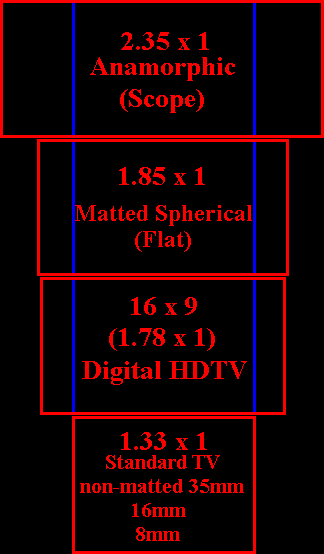
Movies are nothing more than a series of pictures that are flashed across the screen so fast that our eyes perceive them as a moving image because we can not see the gaps between the different pictures. The standard speed for this is 24 frames per second. Movies are shot on film that is made of chemicals that react to light and reproduce images with the colors reversed (meaning black appears white on the negatives) After these negatives have been edited they are copied onto more film. Because film reverses colors the negative colors are reversed back to the original colors.
35mm Formats
Vertical 35mm film is the standard way to shoot and distribute movies.
Large Formats
There are also several formats that use film that is larger than 35mm.
Sub-35mm
And some formats that are smaller than 35mm
Sound
There are also several diferent ways to have sound that goes with the movie
MaxiVision
A new 35mm format who's makers hope will forever change the industry
DVD Formats
When you transfer a film to DVD some are compatable with widescreen TV and other's are less compatable.
DXP: aka 1k, 2K and 4k
The choice for special effects or digital intermediates.

Unlike alot of widescreen advocates, I am not going to pretend that letterboxing does not have its own downside. That downside is that the picture is smaller so you can not make out as much detail.


Copyright 2000 by:
Brian Fitzgerald